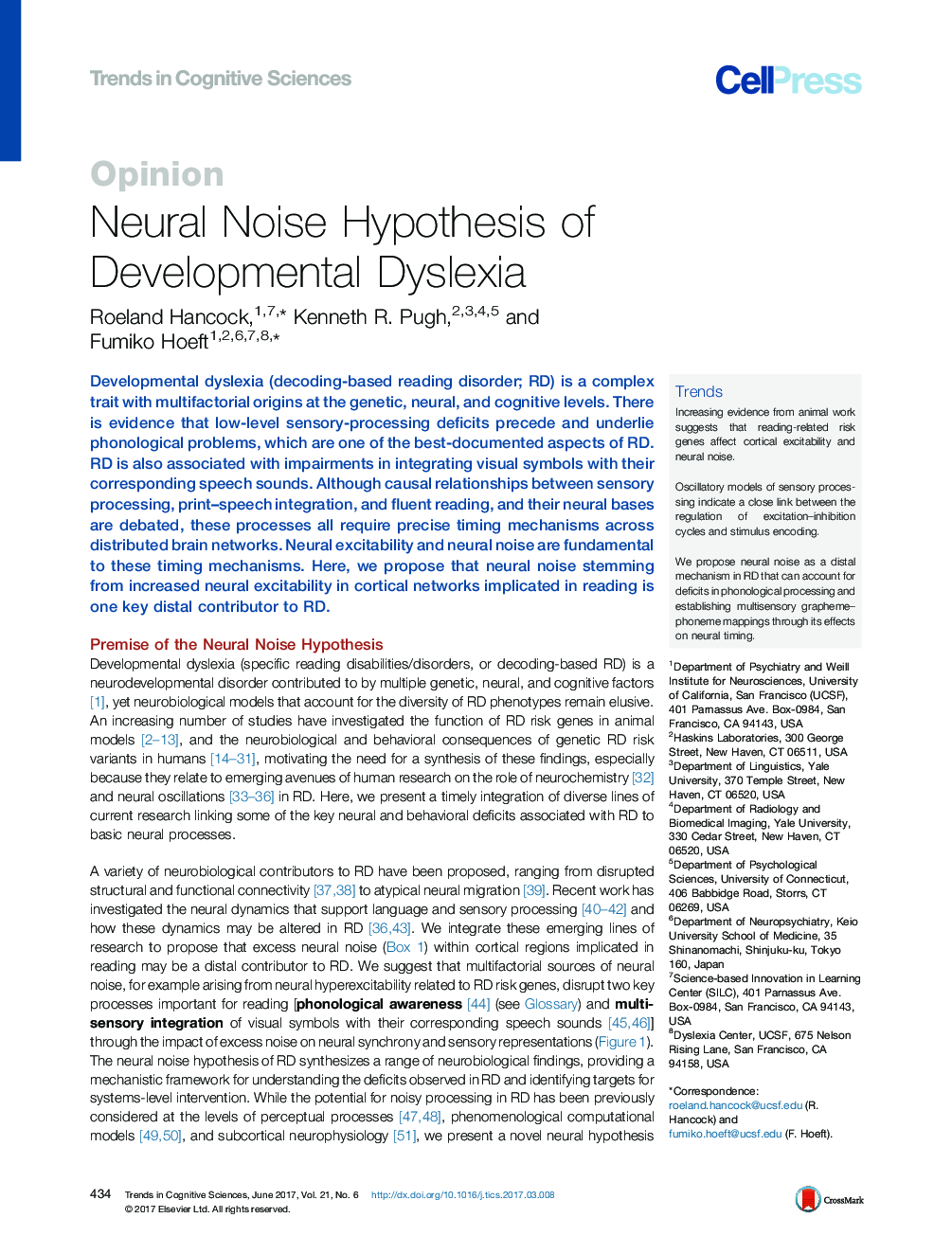| Article ID | Journal | Published Year | Pages | File Type |
|---|---|---|---|---|
| 4762190 | Trends in Cognitive Sciences | 2017 | 15 Pages |
Abstract
Developmental dyslexia (decoding-based reading disorder; RD) is a complex trait with multifactorial origins at the genetic, neural, and cognitive levels. There is evidence that low-level sensory-processing deficits precede and underlie phonological problems, which are one of the best-documented aspects of RD. RD is also associated with impairments in integrating visual symbols with their corresponding speech sounds. Although causal relationships between sensory processing, print-speech integration, and fluent reading, and their neural bases are debated, these processes all require precise timing mechanisms across distributed brain networks. Neural excitability and neural noise are fundamental to these timing mechanisms. Here, we propose that neural noise stemming from increased neural excitability in cortical networks implicated in reading is one key distal contributor to RD.
Related Topics
Life Sciences
Neuroscience
Cognitive Neuroscience
Authors
Roeland Hancock, Kenneth R. Pugh, Fumiko Hoeft,
